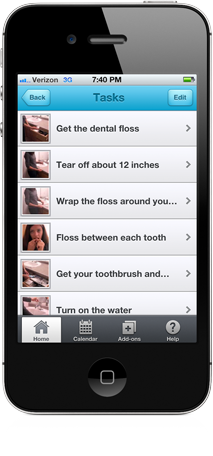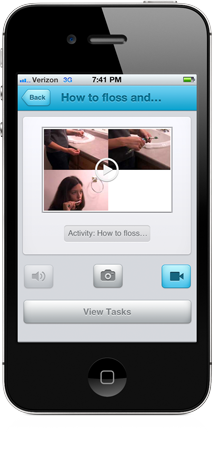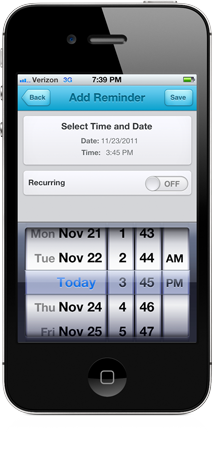The following is a guest post from Gayle Bowser, an assistive technology independent consultant who has worked with The Functional Planning System and believes in the value it provides to individuals with cognitive disabilities.
I have to say that I think The Conover Company’s most recent move to curriculum and life skills supports on mobile devices is groundbreaking. The Functional Planning System has enormous potential for real life applications for students and adults who need support in independent living.
The Functional Planning System is a video-based, customizable prompting tool for the iPhone, iPod touch and iPad. It’s a cross
between a calendar and video playlist, and it allows users to actually plan a day using the support of short digital video clips that prompt them through the completion of activities. Each activity is broken down into several shorter steps. The user can set alarms as reminders to do tasks and activities, and the Internet version gives them the luxury of access anywhere. The program has built-in accountability with many different user and administrator report options. You can also create viewer accounts so that family members and other supporters can easily log in and see the user’s progress.
Educating for Independence
Tools like the Functional Planning System can help change the lives of students and adults who need supports for memory and task completion. But we need to teach those students how to use and respond to this kind of cognitive support tool. If we do our jobs well as educators, we will respond to this innovation in technology with parallel innovations in our instruction. Our instruction will move from classroom-based activities about adult living to real opportunities using cognitive supports in everyday routines and activities in school and in the community.
Using the Functional Planning System, a student could set an alarm to go off every day at 2:00 PM that says “Time to deliver the mail.” When the student
In order for my example student to use the Functional Planning System for reminders, task completion and scheduling, it is my responsibility to teach the student how to use the application. I’ve been thinking about the best way to go about that. Here’s my initial list of skills:
- Operation of the device that is running the application
- How to recognize and press the button that indicates the step is done
- How to match the step on the video with the real step in the real world
- How to listen and watch a video and then imitate the actions it shows
- How to move to the next step
- How to explain the system to other people so that they understand what it is used for
- How to be “polite” with the device so that the sound and video are not disruptive in a public environment
- When to use the system and when to use other supports for task completion and scheduling
New tools like The Conover Company’s Functional Planning System have huge potential for students and adults with cognitive and memory difficulties. It is never too early for educators to expose their students to the use of cognitive supports like this. If you are using the Functional Planning System or some other kind of cognitive support technology, I’d love to hear from you. What steps do you take to help your students understand the purpose of the system? How do you introduce it in real world settings? Tell me a story about your students. I would love to hear stories about how technology like this supports student independence and success.

